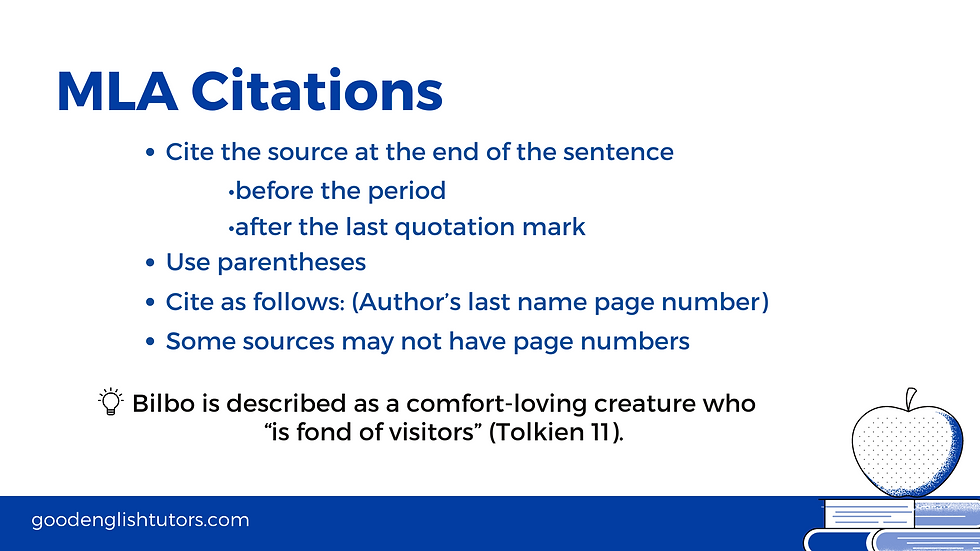Hey guys, it's Dustin the writing tutor. Today, I want to teach you how you can create smooth, integrated quotations.
I'm going to go over 4 methods in this article and I really think it's going to help you with your paragraph responses and your essays.
MLA Citations
Whenever we quote we need to attribute where that quotation came from to show that it belongs to somebody else. One way we can do this in Language Arts is through MLA Citations, where we use the author's last name and the page number in parenthesis.

Whenever we use a quotation we need to make sure that the point behind that quotation is connected to the main idea of our paragraph, that it's explained, and that we show how it's relevant to the paper as a whole.

Method 1: Use a Comma
One of the most common ways to introduce a quotation is by using a phrase like --
"according to the author", or when the author discusses the intricacies of language --"she states", and then follow that with a comma and the quotation.

Let's look at an example below:

Let's practice! Go ahead and create your own sentence with this quotation from J.R.R. Tolkien:

Below is a possible answer using a comma to introduce a quotation. Note here that we didn't just say that "Bilbo writes", we actually gave some context for this quotation.

Method 2: Use No Punctuation
The second method involves introducing a quotation without any punctuation. Oftentimes the word "that" will help you to achieve this.

Here is an example:

Let's get some practice from the following quotation from John Green's Looking for Alaska:

Here is one possible answer:

Method 3: Use a Colon
Method 3 is my personal favorite. It involves using a colon to introduce the quotation. Just make sure that you have a complete sentence when you're using a colon.

In the example below, we can see that we have a complete sentence before using the colon and then the quotation is given.

Let's practice with this quotation from Lewis Carroll's Through the Looking Glass.

Let's look at a possible answer below:

Method 4: Weave in Short Quotes
The fourth method involves using a few short quotations woven into your own writing.
You don't have to use all of a quotation. You can break it up into smaller parts and then paraphrase those parts that you didn't end up using.

Below is an example:

Let's practice this quotation by Margery Williams in The Velveteen Rabbit:

Here is one possible answer:

Can Quotations Be Changed?
One question many people have is can you change a quotation?
The truth is you can change quotations.

The way to do this is to use brackets around the change that you're making and make sure the change is minimal and doesn't affect the meaning of what the author intended.

Capitalization
When should quotations be capitalized?
We capitalize the first letter of a quotation if it starts with a complete sentence. Don't capitalize a quotation when it's only part of the original or when it's a fragment. If you need to change the capitalization for your sentence, use brackets around that change.


Quotation Marks
When using quotation marks, remember that they come in pairs. If you start with a quotation mark, you have to show that you finished the quote by ending it in a quotation mark.
Also, if you're quoting dialogue, use what's called the inverted comma, or that single quotation mark to show where the dialogue begins and ends within your quote.

Quoting Errors
What do you do if your quote has an error within it?
Use the quote as it appears but include the term sic in brackets to show that you haven't changed anything and that the error is not yours.

Are you looking to enhance your writing skills? We're here to support you in your journey! 🙂


YEah true these links if you press them are very helpful in my college writing
This helps me alot you should check these other links